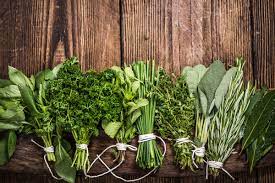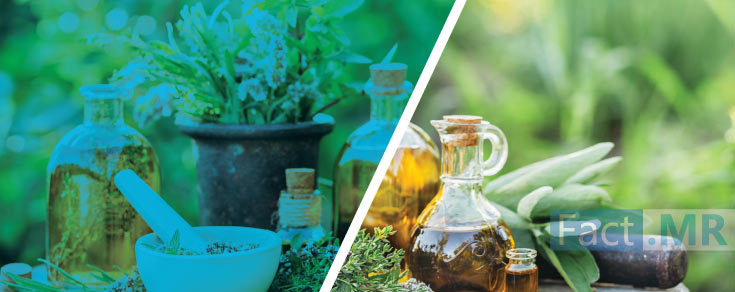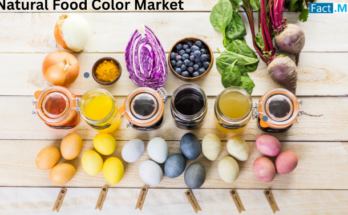In a world where the pursuit of natural remedies and holistic healthcare is on the rise, the demand for medicinal herbs is gaining significant attention. Medicinal herbs, also known as medicinal plants or herbal medicines, have been used for centuries in traditional medicine systems across the globe. With their therapeutic properties and bioactive compounds, these herbs are now finding their way into modern medicine and wellness practices. In this article, we will delve into the fascinating world of the medicinal herbs industry, exploring its benefits, market potential, and the growing demand for natural remedies.
The Power of Medicinal Herbs
Medicinal herbs are nature’s gift to mankind, offering a wide range of health benefits. These plants contain bioactive compounds such as alkaloids, flavonoids, terpenes, and phenolic compounds, which possess medicinal properties. From boosting the immune system to relieving stress and promoting overall well-being, medicinal herbs have a diverse range of applications. They can be used to treat various health conditions, including digestive disorders, respiratory issues, skin problems, and even chronic diseases like diabetes and cardiovascular conditions. The therapeutic potential of medicinal herbs is vast, and ongoing research continues to uncover new uses and benefits.
Market Potential in the United States
The United States presents a promising investment space for the medicinal herbs industry. With a growing interest in natural healthcare and a shift towards holistic wellness, the demand for herbal medicines is on the rise.
According to Fact.MR, worldwide sales of medicinal herbs are estimated at US$ 328 billion in 2023.
Consumers are seeking alternative remedies that are gentle, sustainable and have fewer side effects compared to conventional pharmaceuticals. This trend has created a favorable market for medicinal herb providers to cater to the increasing demand. Additionally, the United States has a well-established regulatory framework that allows for the marketing and sale of herbal products as dietary supplements. This regulatory clarity provides consumer confidence and ensures quality assurance.
European Countries as Bankable Markets
European countries also represent bankable markets for medicinal herb providers. Many European nations have a rich history of using herbal medicines in their traditional healthcare systems. The European Union has put regulations in place to ensure the safety, quality, and efficacy of herbal medicines. This regulatory framework provides a solid foundation for companies looking to enter the European market. Moreover, European consumers are increasingly embracing natural and holistic healthcare options, creating a favorable environment for medicinal herb providers. However, it is important to note that each European country has its own specific regulations and requirements for herbal medicines, which companies must navigate to successfully penetrate these markets.
10 Most Commonly Used Medicinal Herbs List
The 10 most commonly used herbs vary depending on cultural practices and regional preferences.

However, here is a list of 10 medicinal herbs that are widely used and recognized for their culinary and medicinal properties:
1. Basil: Known for its sweet and aromatic flavor, basil is commonly used in Italian and Southeast Asian cuisines. It is also valued for its anti-inflammatory and antioxidant properties.
2. Mint: With its refreshing taste, mint is popular in both sweet and savory dishes. It is often used in teas, desserts, and cocktails. Mint is also known for its digestive benefits and soothing effects.
3. Rosemary: This aromatic herb is commonly used in Mediterranean cuisine. Its distinct pine-like flavor pairs well with roasted meats, vegetables, and bread. Rosemary is also associated with memory enhancement and improved concentration.
4. Thyme: Known for its earthy and slightly minty flavor, thyme is a staple in many cuisines. It is often used in soups, stews, and roasted dishes. Thyme also has antimicrobial properties and is used in natural remedies for respiratory ailments.
5. Parsley: Widely used as a garnish, parsley adds freshness and a mild herbal flavor to dishes. It is rich in vitamins A, C, and K and is known for its detoxifying and diuretic properties.
6. Sage: With its savory and slightly peppery flavor, sage is often used in stuffing, sausages, and roasted meats. It is also believed to have cognitive and memory-enhancing properties.
7. Oregano: A staple in Italian and Mediterranean cuisines, oregano has a robust and slightly bitter flavor. It is commonly used in pasta sauces, pizza, and grilled meats. Oregano is known for its antimicrobial and antioxidant properties.
8. Cilantro/Coriander: Cilantro refers to the leaves, while coriander refers to the seeds of the same plant. Cilantro has a fresh and citrusy flavor and is commonly used in Mexican, Indian, and Asian cuisines. Coriander seeds have a warm and nutty flavor and are used as a spice. Both cilantro and coriander have digestive and anti-inflammatory properties.
9. Dill: Known for its feathery leaves and distinct flavor, dill is often used in pickles, seafood dishes, and sauces. It is also used for its digestive properties and as a breath freshener.
10. Chives: These mild and onion-like herbs are commonly used as a garnish or in dips and salads. Chives are rich in vitamins A and C and are believed to have antibacterial properties.
These herbs not only add flavor and aroma to culinary dishes but also offer various health benefits. Incorporating them into your meals can enhance both the taste and nutritional value of your food.
Is There a Market & Demand for Medicinal Herbs?
Yes, there is a growing market and demand for medicinal herbs. The increased interest in natural remedies, holistic healthcare, and alternative medicine has contributed to the growing demand for medicinal herbs.
Here are some factors that highlight the market potential and demand for medicinal herbs:
1. Consumer Preference for Natural Remedies: Consumers are increasingly seeking natural alternatives to conventional pharmaceuticals. They are looking for remedies that are gentle, sustainable and have fewer side effects. Medicinal herbs offer a holistic approach to health and wellness, which resonates with a significant portion of the population.
2. Rising Health Consciousness: People are becoming more conscious of their health and are actively seeking ways to prevent illness and maintain overall well-being. Medicinal herbs are seen as a proactive and preventive approach to health, supporting the body’s natural healing processes.
3. Traditional and Cultural Practices: Many cultures have a long history of using medicinal herbs in their traditional healthcare systems. As people reconnect with their cultural roots and traditions, there is a resurgence of interest in using herbal remedies for various health conditions.
4. Wellness and Self-Care Trends: The wellness industry has experienced significant growth in recent years. People are investing more in self-care practices and are willing to explore natural remedies and herbal solutions to support their physical and mental well-being.
5. Regulatory Clarity: Many countries have established regulatory frameworks that allow for the marketing and sale of herbal products as dietary supplements or traditional medicines. This regulatory clarity provides consumer confidence and ensures quality assurance, further driving the demand for medicinal herbs.
6. Scientific Research and Validated Benefits: Ongoing scientific research is uncovering the therapeutic properties and health benefits of various medicinal herbs. This research provides evidence-based support for the use of herbs in treating specific health conditions, further fueling the demand for herbal remedies.
7. Global Market Potential: The market for medicinal herbs is not limited to a specific region or country. With the increasing popularity of herbal medicine, there is a global market potential for medicinal herbs, allowing businesses to cater to a wide range of consumers.
It is important for businesses in the medicinal herbs industry to stay informed about market trends, consumer preferences, and regulatory requirements to effectively tap into the growing demand for herbal remedies.
- Cell Therapy Technologies: Revolutionizing Medicine for a Better Future (Worth US$ 19.6 Billion)
- Transporting Biopharmaceuticals Across Climate Zones: Overcoming Logistical Challenges
- Beyond the Traditional: Exploring Alternative Surgical Techniques for Enhanced Patient Care




